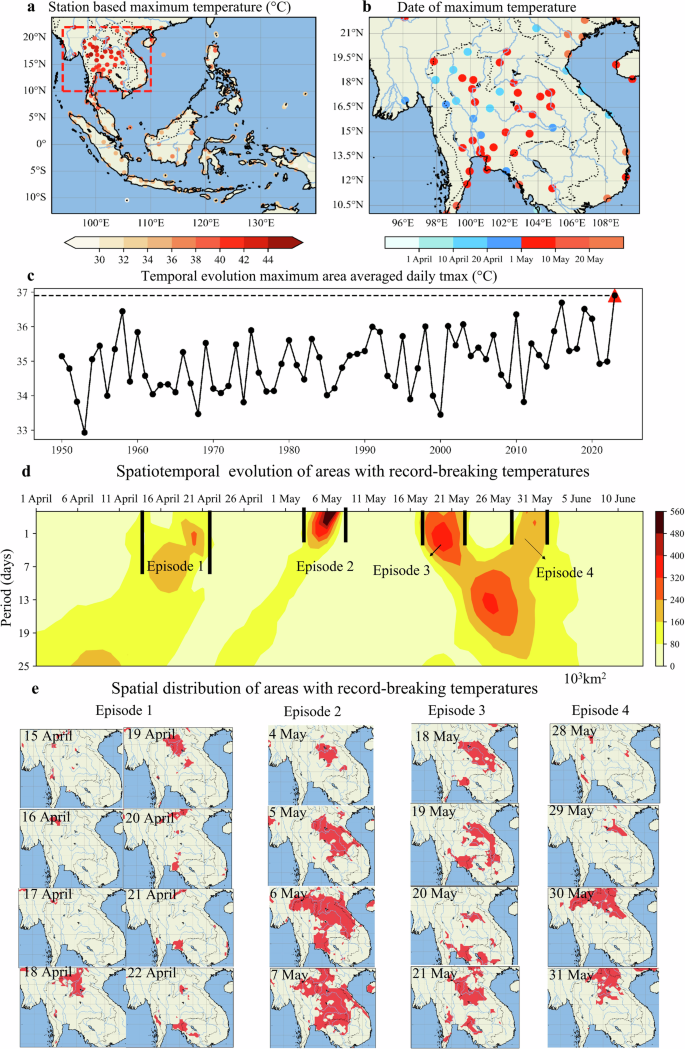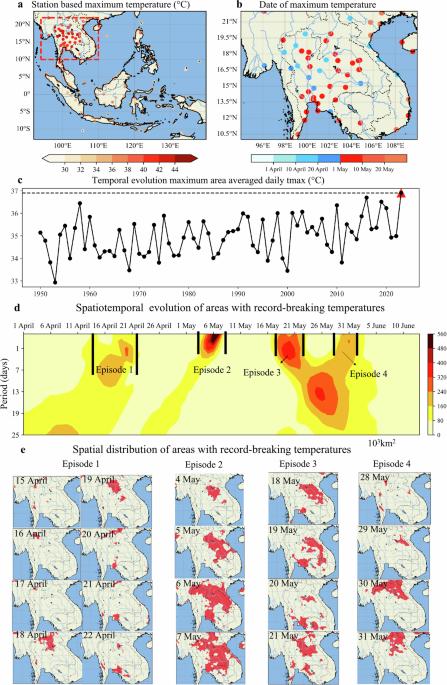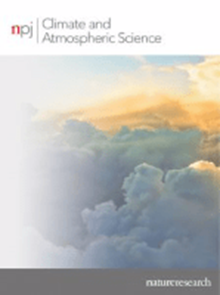2023 年东南亚史无前例的热浪的特征、机制、可预测性和影响
IF 8.4
1区 地球科学
Q1 METEOROLOGY & ATMOSPHERIC SCIENCES
引用次数: 0
摘要
2023 年 4 月和 5 月,东南亚(SEA)遭遇了一场异常的热浪。东南亚大陆地区受影响最严重,所有国家的最高气温都超过了 42 °C,打破了历史记录,泰国更是创下了 49 °C的区域新纪录。本研究对这一事件的时空演变、物理机制、预报性能、重现期和广泛影响进行了全面分析。受热带波影响的高压增强、水汽不足和陆地-大气强耦合被认为是这次极端热浪事件的主要驱动因素。ECMWF 对土壤水分减少的预报能力有限,未能捕捉到陆地-大气耦合,导致热浪强度被严重低估。虽然根据罕见的气温记录,这次热浪事件的回归期为 129 年,但近地表干燥和土壤水分不足共同引发了强烈的陆地-大气正反馈和快速变暖,这种情况极为罕见,发生概率仅为 0.08%。这些分析强调了这一无与伦比的热浪事件的特殊性及其潜在的物理机制,揭示了其广泛的影响,包括对健康的重大影响、野火的明显增加以及农业减产。本文章由计算机程序翻译,如有差异,请以英文原文为准。


The characterization, mechanism, predictability, and impacts of the unprecedented 2023 Southeast Asia heatwave
In April and May 2023, Southeast Asia (SEA) encountered an exceptional heatwave. The Continental SEA was hardest hit, where all the countries broke their highest temperature records with measurements exceeding 42 °C, and Thailand set the region’s new record of 49 °C. This study provides a comprehensive analysis of this event by investigating its spatiotemporal evolution, physical mechanisms, forecast performance, return period, and extensive impacts. The enhanced high-pressure influenced by tropical waves, moisture deficiency and strong land-atmosphere coupling are considered as the key drivers to this extreme heatwave event. The ECMWF exhibited limited forecast skills for the reduced soil moisture and failed to capture the land-atmosphere coupling, leading to a severe underestimation of the heatwave’s intensity. Although the return period of this heatwave event is 129 years based on the rarity of temperature records, the combination of near-surface drying and soil moisture deficiency that triggered strong positive land-atmosphere feedback and rapid warming was extremely uncommon, with an occurrence probability of just 0.08%. These analyses underscore the exceptional nature of this unparalleled heatwave event and its underlying physical mechanisms, revealing its broad impacts, including significant health repercussions, a marked increase in wildfires, and diminished agricultural yields.
求助全文
通过发布文献求助,成功后即可免费获取论文全文。
去求助
来源期刊

npj Climate and Atmospheric Science
Earth and Planetary Sciences-Atmospheric Science
CiteScore
8.80
自引率
3.30%
发文量
87
审稿时长
21 weeks
期刊介绍:
npj Climate and Atmospheric Science is an open-access journal encompassing the relevant physical, chemical, and biological aspects of atmospheric and climate science. The journal places particular emphasis on regional studies that unveil new insights into specific localities, including examinations of local atmospheric composition, such as aerosols.
The range of topics covered by the journal includes climate dynamics, climate variability, weather and climate prediction, climate change, ocean dynamics, weather extremes, air pollution, atmospheric chemistry (including aerosols), the hydrological cycle, and atmosphere–ocean and atmosphere–land interactions. The journal welcomes studies employing a diverse array of methods, including numerical and statistical modeling, the development and application of in situ observational techniques, remote sensing, and the development or evaluation of new reanalyses.
 求助内容:
求助内容: 应助结果提醒方式:
应助结果提醒方式:


